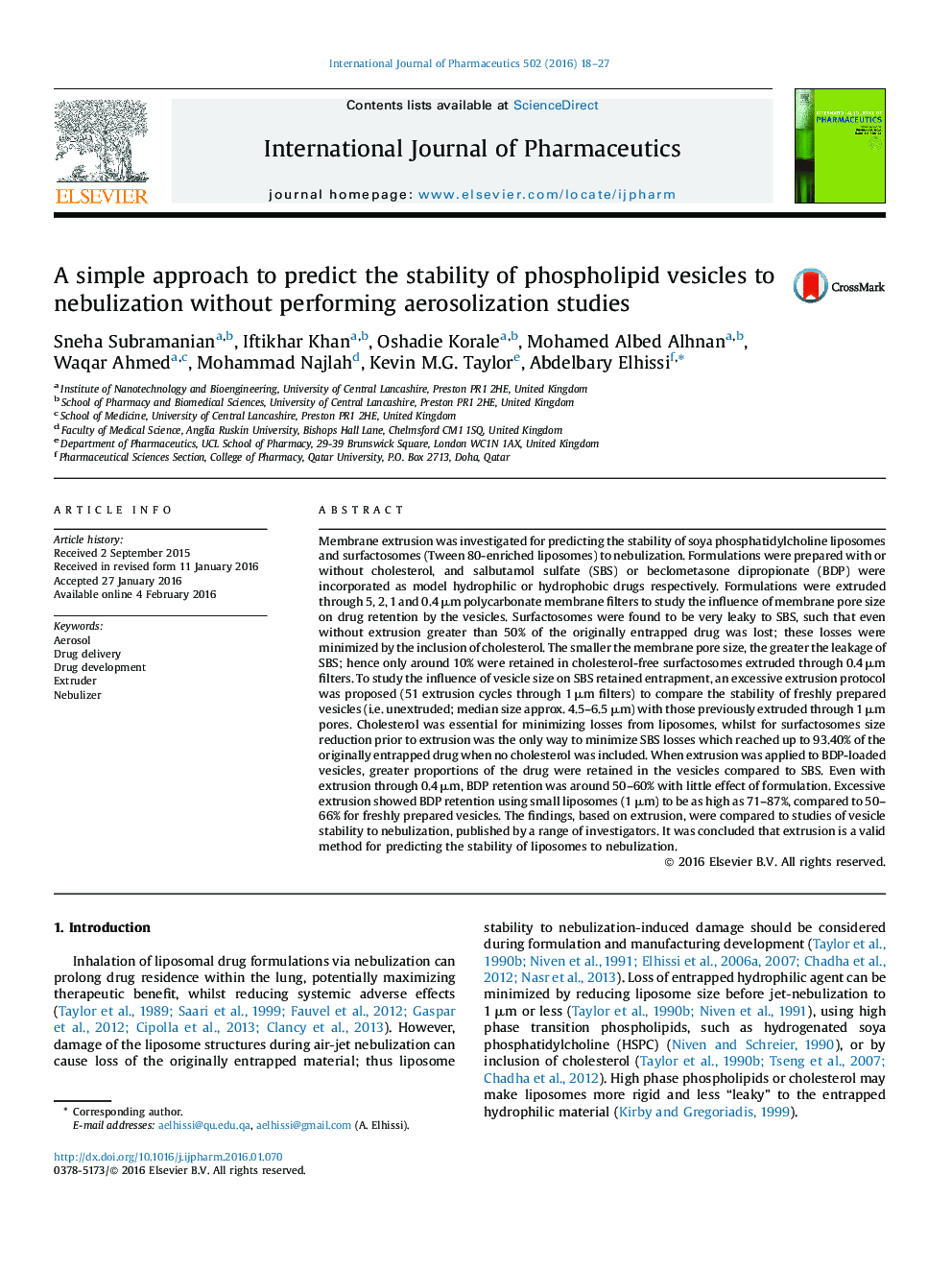| کد مقاله | کد نشریه | سال انتشار | مقاله انگلیسی | نسخه تمام متن |
|---|---|---|---|---|
| 2501057 | 1557319 | 2016 | 10 صفحه PDF | دانلود رایگان |
Membrane extrusion was investigated for predicting the stability of soya phosphatidylcholine liposomes and surfactosomes (Tween 80-enriched liposomes) to nebulization. Formulations were prepared with or without cholesterol, and salbutamol sulfate (SBS) or beclometasone dipropionate (BDP) were incorporated as model hydrophilic or hydrophobic drugs respectively. Formulations were extruded through 5, 2, 1 and 0.4 μm polycarbonate membrane filters to study the influence of membrane pore size on drug retention by the vesicles. Surfactosomes were found to be very leaky to SBS, such that even without extrusion greater than 50% of the originally entrapped drug was lost; these losses were minimized by the inclusion of cholesterol. The smaller the membrane pore size, the greater the leakage of SBS; hence only around 10% were retained in cholesterol-free surfactosomes extruded through 0.4 μm filters. To study the influence of vesicle size on SBS retained entrapment, an excessive extrusion protocol was proposed (51 extrusion cycles through 1 μm filters) to compare the stability of freshly prepared vesicles (i.e. unextruded; median size approx. 4.5–6.5 μm) with those previously extruded through 1 μm pores. Cholesterol was essential for minimizing losses from liposomes, whilst for surfactosomes size reduction prior to extrusion was the only way to minimize SBS losses which reached up to 93.40% of the originally entrapped drug when no cholesterol was included. When extrusion was applied to BDP-loaded vesicles, greater proportions of the drug were retained in the vesicles compared to SBS. Even with extrusion through 0.4 μm, BDP retention was around 50–60% with little effect of formulation. Excessive extrusion showed BDP retention using small liposomes (1 μm) to be as high as 71–87%, compared to 50–66% for freshly prepared vesicles. The findings, based on extrusion, were compared to studies of vesicle stability to nebulization, published by a range of investigators. It was concluded that extrusion is a valid method for predicting the stability of liposomes to nebulization.
Figure optionsDownload high-quality image (114 K)Download as PowerPoint slide
Journal: International Journal of Pharmaceutics - Volume 502, Issues 1–2, 11 April 2016, Pages 18–27
